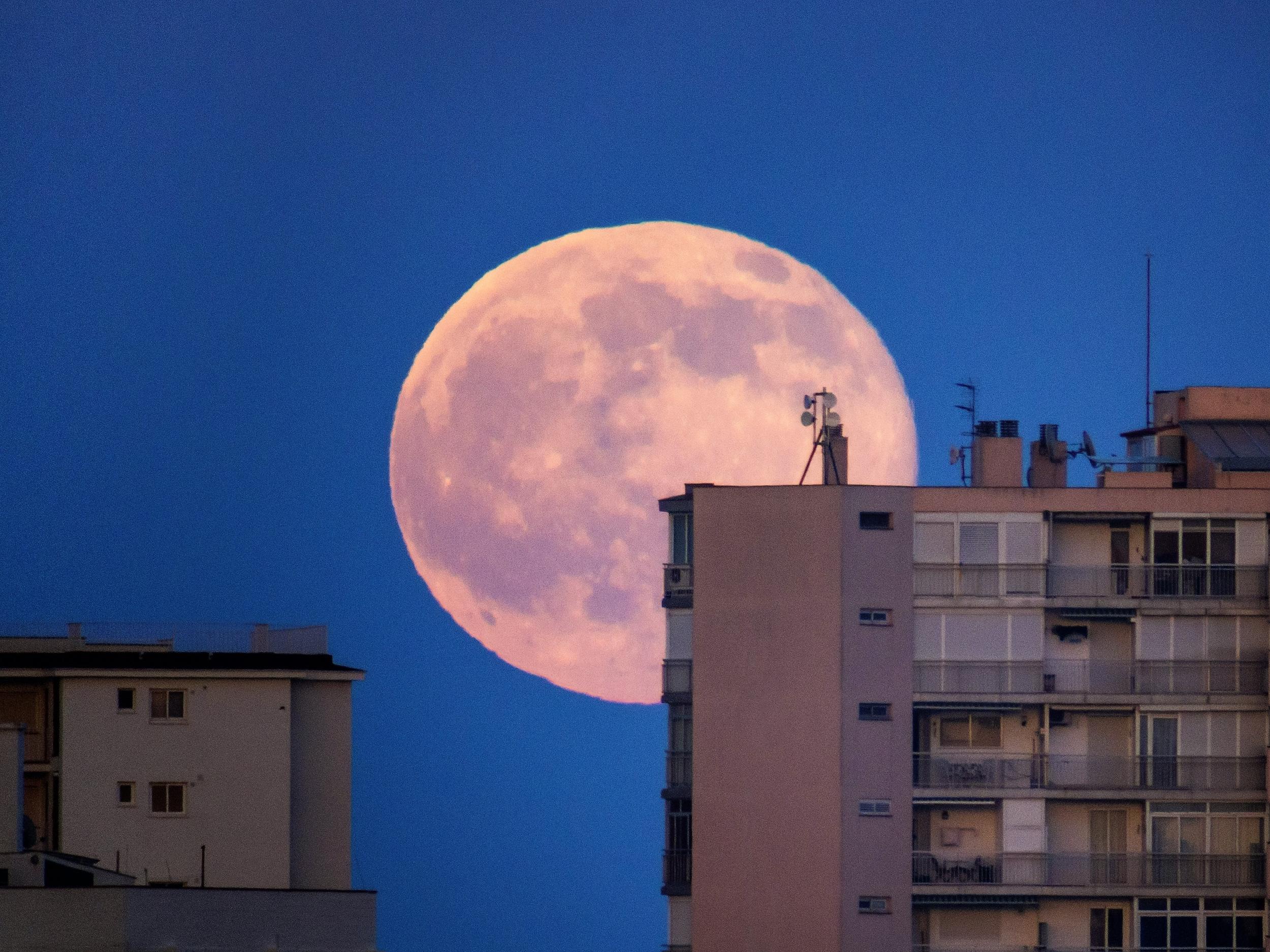This website uses cookies so that we can provide you with the best user experience possible. Cookie information is stored in your browser and performs functions such as recognising you when you return to our website and helping our team to understand which sections of the website you find most interesting and useful.

The biggest and brightest full moon of the year rose over the skies of the UK on Tuesday, offering the best chance to view a supermoon in 2020.
Fortunately for anyone who missed the rare spectacle, there will be one more chance to view it on Wednesday night.
April's supermoon – officially referred to as a perigean full moon – will be the third month in a row for the rare celestial event. It occurs when the full moon is at its closest point to Earth in its monthly orbit.
On 7-8 April, the moon will get as close as 356,907km (221,772 miles) to Earth, making it appear bigger and brighter in the night's sky.
The time of year means this full moon is known in folklore as the 'Pink moon', as it usually coincides with spring flower blossoms.
The best time and date to see the supermoon is at moonrise on Tuesday and at moonset on Wednesday, when it is close to the horizon.
This is due to an optical illusion that makes it appear even bigger due to its relative size to buildings and objects on the horizon. The supermoon's peak illumination will take place just after 6pm GMT on Tuesday, though it may not be visible until after sunset.
The term was first coined by astrologer Richard Nolle in 1979, who defined a supermoon as any full moon that was within 90 per cent of its closest approach.
Created with Sketch.
Created with Sketch.
1/20 London
Getty
2/20 County Laois, Ireland
PA
3/20 Skopje, North Macedonia
EPA
4/20 Cambridgeshire
PA
5/20 New York
Reuters
6/20 Notre Dame, Paris
Reuters
7/20 Golden Gate Bridge, San Francisco
Reuters
8/20 Milton Keynes
Reuters
9/20 Chilterns
Reuters
10/20 St Louis, Missouri
AP
11/20 The Shard, London
Reuters
12/20 Edinburgh
PA
13/20 Golden Gate Bridge, San Francisco
Reuters
14/20 Dolomites mountain range
EPA
15/20 Worthing
Getty
16/20 London
PA
17/20 Windsor
PA
18/20 Dublin
PA
19/20 Falkirk
PA
20/20 Sunderland
PA
1/20 London
Getty
2/20 County Laois, Ireland
PA
3/20 Skopje, North Macedonia
EPA
4/20 Cambridgeshire
PA
5/20 New York
Reuters
6/20 Notre Dame, Paris
Reuters
7/20 Golden Gate Bridge, San Francisco
Reuters
8/20 Milton Keynes
Reuters
9/20 Chilterns
Reuters
10/20 St Louis, Missouri
AP
11/20 The Shard, London
Reuters
12/20 Edinburgh
PA
13/20 Golden Gate Bridge, San Francisco
Reuters
14/20 Dolomites mountain range
EPA
15/20 Worthing
Getty
16/20 London
PA
17/20 Windsor
PA
18/20 Dublin
PA
19/20 Falkirk
PA
20/20 Sunderland
PA
The coinage and use of the term has been criticised by astronomers, however some welcome it as a way to encourage interest in astronomy.
“Some astronomers complain about the name supermoon. They like to call supermoons hype,” astronomer and EarthSky contributor Bruce McClure wrote recently.
“But supermoons aren’t hype. They’re special. Many people now know and use the word supermoon. We notice even some diehards are starting to use it now... No doubt about it. Supermoon is a catchier term than perigean full moon."
The supermoon will also have an effect on the Earth’s ocean, Mr McClure notes, with the extra gravitational pull from the moon creating extra-high tides.
People living along the coast will notice them one or two days after the supermoon has passed, though any risk of flooding is unlikely unless the high tides are combined with severe weather.
For most parts of the UK, Wednesday will see exceptionally good weather with highs of up to 24C in the south and east.
Clear skies and reduced air pollution due to the coronavirus lockdown means April’s supermoon could be one of the best ever times to view a supermoon.



 Africana55 Radio
Africana55 Radio 

